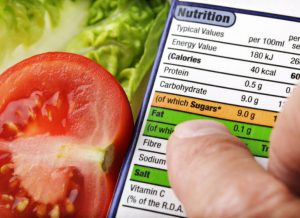HOW TO READ FOOD LABELS

What goes into the making of the food – generally they are listed by weight from the ingredient in the largest quantity and progresses toward lower ones.
Food is not just about calories. It is more than that. It talks to your body and tells it what to do. The most powerful tool to change your health and well-being is your plate. So, how do you know what exactly you are eating? The information lies right before you in the nutrition label of your food.
You might be intimidated to read all that finely printed list of ingredients and nutritional information. But you ought to know if the information in the back matches with the food manufacturer’s claims on the front. You have to read the labels to make sure you know what you are eating. Here’s everything you need to know about food labels:
1. Use by Date vs. Best Before
Perishable foods like milk, meat, fish etc contain a use by date. This is pretty straightforward – you are not supposed to consume the food after the use by date. Best before date is printed on shelf foods like biscuits, frozen, tin and dried foods. This means that the food will taste best till that date but then will slowly start to deteriorate.
2. The logic behind Serving Size and Servings per pack
The serving size for a bag of chips might be 10 chips or 25 grams per pack, but how many people have stopped after consuming 10 chips? This is determined by the manufacturer and you should always consider this to help you understand the nutritional content of the food. When you divide the total weight by the serving size you get servings per pack.
Nothing hits the spot like a gulp of your favorite energy drink right after a rigorous workout. But just because it comes in a bottle, doesn’t mean you have to drink it all. Look at the nutrition label and see the size of a single serving and the servings per pack. That way you will know whether you are drinking enough for you or for your entire team!
3. The Nutritional Panel
This panel can largely be divided into the following parts:
● Calories – The amount of calories for a single serving is listed here. Also, make note of the calories from fat to understand how this contributes to the number of calories. If a high percentage of calories come from fat, you might want to consider to eat sparingly.
● Fat Content – Not all fats are bad. It is good to avoid trans, saturated and polyunsaturated fat. Aim for foods in monounsaturated fat instead.
● Cholesterol – Watch out for the cholesterol content in the pack and try to keep it down.
● Sodium – Total content of sodium should be below 2400 mg. As a general value, 5% and below daily value of sodium is considered low salt and 20% as high.
● Potassium – The daily recommended intake of potassium should be at 3500 mg/day and it is essential to perform important body functions.
● Carbohydrates – This is the total mass of starch from flour, corn, potatoes, rye and the sugars derived from cane sugar, fruit, honey or milk. Check out the ratio of the total carbohydrates to sugars. Now, the closer the grams of sugar is to the total carbs, the closer the foods get to the junk quality. Also, consider the dietary fiber content to see if you are getting enough.
● Protein – A low protein diet is said to take the strain of ailing kidneys. A high protein content is 12g per serving of 100gm and the recommended daily intake is 50 to 75 grams.
● Others – How many superstar ingredients like vitamins, iron, folate, magnesium do the food have, if any? Consult this section to consider how much essential vitamins and special nutrients you get from the food.
4. Ingredients
What goes into the making of the food – generally they are listed by weight from the ingredient in the largest quantity and progresses toward lower ones. Also watch out for additives like preservative, colors and flavor enhancers used to see the quality of the food.
3. Percentage Daily Values
Last, but not the least this handy-dandy footnote is only a guideline of nutrients that you must consume on a daily basis. It is important for you to understand your own nutritional profile and see what’s right for you.
Congratulations! You now know how to read a label and determine whether the food is healthy or not. So, now pull some food out of your pantry and see how it measures up. Have fun with your shopping and make an intelligent decision by looking at the food labels.
